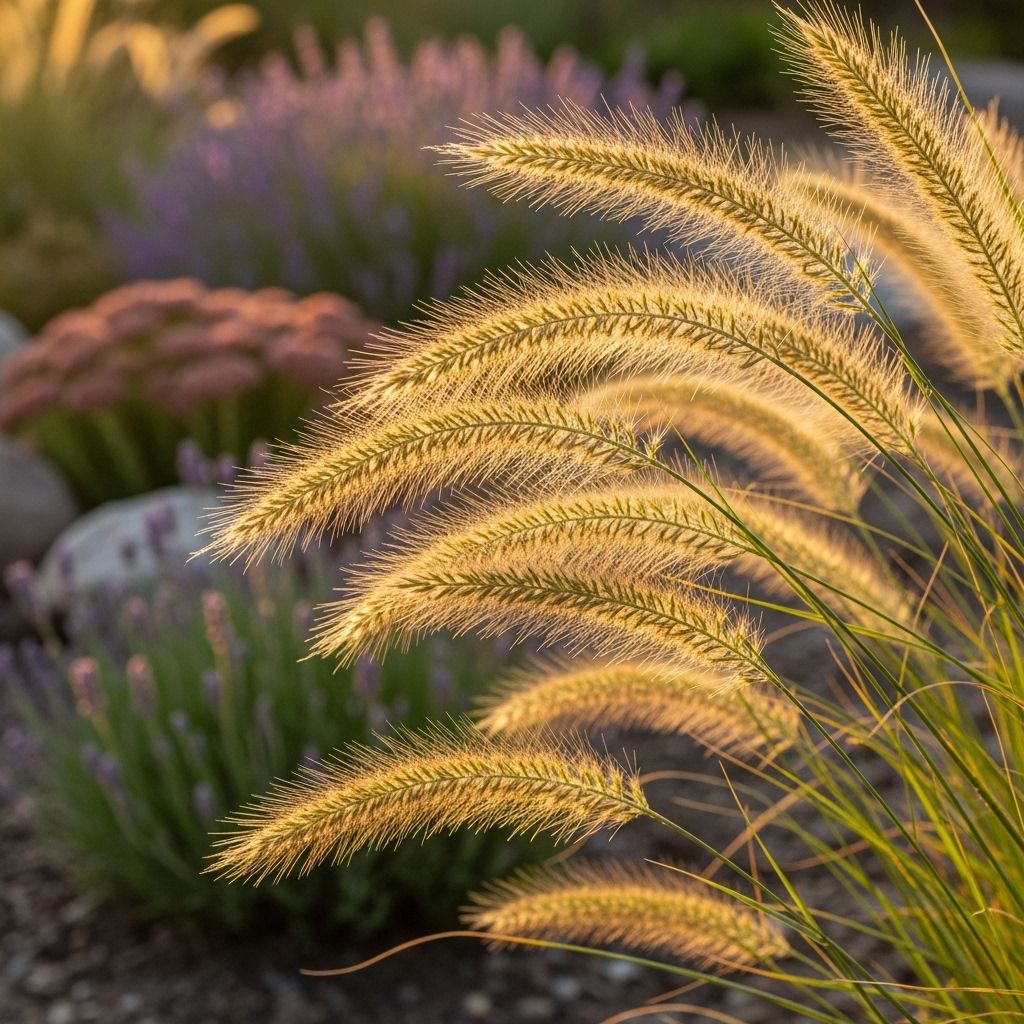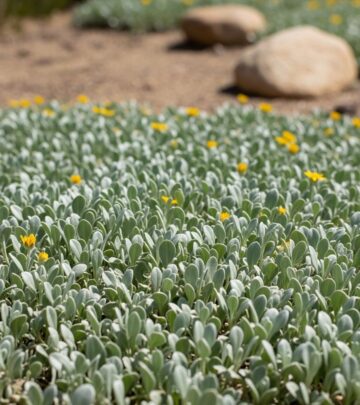Mexican Feather Grass Care: Guide For Low-Maintenance Gardens
Discover the ethereal beauty and simple care requirements of this graceful ornamental grass

Image: HearthJunction Design Team
Introduction to Mexican Feather Grass
Mexican Feather Grass (Nassella tenuissima, formerly known as Stipa tenuissima) is one of the most graceful ornamental grasses available for the home landscape. With its fine-textured, hair-like blades that dance in the slightest breeze, this grass adds movement, texture, and a touch of whimsy to gardens. Its delicate appearance belies its remarkable hardiness and drought tolerance, making it an increasingly popular choice for low-maintenance and water-wise gardens.
Native to the southwestern United States and Mexico, this perennial grass forms elegant, flowing clumps that reach about 1-2 feet in height, with seed heads that can extend up to 2-3 feet tall. The slender, bright green blades transform into a golden blonde color as the season progresses, creating a warm glow in the garden, especially when backlit by the sun.
Whether used as a specimen plant, mass planted to create a meadow effect, or incorporated into mixed borders and container plantings, Mexican Feather Grass brings a distinctive, ethereal quality to the landscape that few other plants can match.
Cheat Sheet
Key Characteristics
- USDA Hardiness Zones: 6-10 (can be grown as an annual in colder zones)
- Sun Exposure: Full sun to light shade
- Soil Requirements: Well-draining, moderately fertile to poor soil
- Mature Size: 12-24 inches tall (foliage), 24-36 inches tall (with seed heads)
- Bloom Time: Late spring to early summer
- Maintenance Level: Low
- Water Needs: Low to moderate; drought-tolerant once established
Design Tips
- Plant in drifts or groups for maximum visual impact
- Use as a textural contrast against broad-leaved plants
- Incorporate into rock gardens, meadow plantings, or desert-inspired landscapes
- Spectacular when backlit by morning or evening sun
- Excellent container plant, especially as the centerpiece in mixed arrangements
- Pairs beautifully with succulents, lavender, salvias, and other drought-tolerant perennials
Keep It Alive
Planting Mexican Feather Grass
Mexican Feather Grass thrives in full sun locations with well-draining soil. This adaptable plant can tolerate a wide range of soil conditions but performs best in loamy, sandy soils with good drainage. Poor drainage can lead to root rot and other moisture-related problems, so if your garden has heavy clay soil, consider amending it with sand or planting on a slight mound to improve drainage.
The ideal time to plant Mexican Feather Grass is in spring after the danger of frost has passed, or in early fall to allow for root establishment before winter. Space plants approximately 12-18 inches apart when planting in groups, as they will spread over time to form elegant drifts.
When planting, dig a hole slightly larger than the root ball, position the plant so that the top of the root ball is level with the soil surface, and backfill with soil. Water thoroughly after planting to settle the soil around the roots. Apply a thin layer of mulch around the plant, being careful to keep it away from the crown to prevent rot.
Growing from Seed
Mexican Feather Grass can be readily grown from seed, making it an economical choice for larger plantings. Start seeds indoors in early spring by placing them on a layer of potting mix, then covering with a thin layer of the same mix or fine sand. Keep the soil consistently moist until germination occurs, typically within 14-21 days.
Once seedlings are sturdy enough to handle, transplant them into individual pots and grow on until they are large enough to plant outdoors. Alternatively, in milder climates, seeds can be sown directly in the garden in spring or fall. Keep the seeding area consistently moist until germination and establishment.
Watering Requirements
One of the most appealing aspects of Mexican Feather Grass is its excellent drought tolerance once established. During the first growing season, water regularly to help establish a deep, extensive root system. After establishment, this grass requires minimal supplemental irrigation except during extended periods of drought.
When watering is necessary, apply water deeply and infrequently rather than with frequent, shallow applications. This encourages deeper root growth and increases the plant’s resilience to drought conditions. Be particularly careful not to overwater Mexican Feather Grass when grown in containers, as this can lead to root rot and plant failure.
Fertilization and Soil
Mexican Feather Grass generally doesn’t require much fertilization and often performs better in leaner soils. Excessive fertilization can lead to floppy growth that diminishes the plant’s natural elegance. If your soil is particularly poor, a light application of an all-purpose organic fertilizer in early spring can provide sufficient nutrients for the growing season.
This grass prefers a slightly alkaline to neutral soil pH but is adaptable to various soil conditions as long as drainage is good. In container plantings, use a well-draining potting mix, possibly amended with additional sand or perlite to improve drainage.
Pruning and Maintenance
Mexican Feather Grass requires minimal maintenance throughout the growing season. The main pruning task is cutting back the foliage in late winter or early spring before new growth emerges. Cut the grass to about 3-4 inches above ground level using clean, sharp shears.
While some gardeners choose to cut back the grass in fall for neatness, leaving the dried foliage standing through winter adds interest to the winter garden and provides protection for the crown during cold weather. The golden, straw-colored foliage and seed heads also provide stunning visual interest when frosted or covered with snow.
Occasional combing through the grass with gloved hands can remove any dead leaves or debris that might accumulate, keeping the plant looking its best. Division is rarely necessary but can be performed in spring if the center of the clump begins to die out or the plant becomes too large for its space.
Self-Seeding Considerations
One important consideration when growing Mexican Feather Grass is its tendency to self-seed prolifically in ideal conditions. While not classified as invasive in most regions, it can spread more aggressively than desired in some gardens, particularly in warm climates with well-draining soils.
To control self-seeding, consider cutting off the seed heads before they mature and shed their seeds. Alternatively, regular monitoring and removal of unwanted seedlings can help maintain the plant within its designated area. In regions where Mexican Feather Grass has been identified as potentially invasive, consider alternative native grasses that provide similar aesthetic appeal without the ecological concerns.
Landscape Design Applications
Border and Mass Plantings
Mexican Feather Grass shines when planted en masse, creating a flowing, undulating sea of texture that responds beautifully to the slightest breeze. Plant in drifts of five or more for maximum impact in larger landscapes. In mixed borders, position it in the middle ground where its fine texture can contrast with broader-leaved perennials and shrubs.
Container Gardening
The graceful habit of Mexican Feather Grass makes it an excellent subject for container plantings, either on its own or as the “thriller” element in mixed arrangements. When grown in containers, use a well-draining potting mix and ensure the container has drainage holes. Mexican Feather Grass can work particularly well in stone or terra cotta containers that complement its natural, rustic appearance.
Rock Gardens and Xeriscape
With its drought tolerance and preference for well-draining conditions, Mexican Feather Grass is perfectly suited to rock gardens and xeriscape designs. Its fine texture provides an excellent contrast to the bold forms of succulents and the structural elements of rocks and gravel. In these settings, the grass’s golden coloration in late summer and fall complements the warm tones often found in drought-tolerant landscapes.
Companion Planting
Mexican Feather Grass pairs beautifully with a wide range of companion plants that share its cultural requirements. Consider planting it alongside:
- Purple-flowering perennials like lavender, salvia, and catmint for striking color contrast
- Architectural plants like yucca or agave to balance its softness with stronger forms
- Silver-foliaged plants like artemisia or lamb’s ears for a complementary color palette
- Late-summer bloomers like echinacea, rudbeckia, and sedum, which peak when the grass begins to take on its golden hues
Seasonal Interest
One of the most appealing aspects of Mexican Feather Grass is its ability to provide multi-season interest in the garden. In spring, fresh green growth emerges, creating a soft, vibrant presence. By early summer, delicate, airy seed heads appear, adding height and an ethereal quality to the plant. As summer progresses into fall, both foliage and seed heads take on gorgeous golden tones that glow when backlit by the sun.
Even in winter, the dried foliage and seed heads offer textural interest, especially when touched by frost or snow. This year-round appeal makes Mexican Feather Grass an excellent investment for gardens seeking consistent visual interest throughout the changing seasons.
Common Problems and Solutions
Mexican Feather Grass is generally pest and disease resistant, which contributes to its low-maintenance reputation. However, there are a few issues to be aware of:
Potential Issues
- Root Rot: Caused by overwatering or poor drainage; ensure soil drains well and avoid overwatering
- Center Die-Out: Older clumps may die out in the center; division in spring can rejuvenate the plant
- Rust: Occasional fungal rust may appear on foliage; improve air circulation and avoid overhead watering
- Lodging: Excessive fertilization or shade can cause plants to flop; reduce fertilizer and ensure adequate sunlight
- Self-Seeding: Can spread aggressively in some conditions; remove seed heads before maturity if this is a concern
Frequently Asked Questions
Q: Is Mexican Feather Grass invasive?
A: Mexican Feather Grass can be quite vigorous in self-seeding under ideal conditions. While not officially classified as invasive in most regions, it has the potential to spread more than desired in some gardens. In certain states or countries, it may be considered potentially invasive, so it’s worth checking local regulations before planting. To control spreading, remove seed heads before they mature or promptly remove unwanted seedlings.
Q: How do I divide Mexican Feather Grass?
A: Division is best done in spring when new growth begins to emerge. Dig up the entire clump, carefully separate it into sections using a sharp spade or knife, and replant immediately. Each division should have a portion of the root system and crown. Water well after replanting to help establish the new divisions. Mexican Feather Grass doesn’t typically require frequent division unless the center begins to die out.
Q: Will Mexican Feather Grass survive winter in colder climates?
A: Mexican Feather Grass is generally hardy in USDA zones 6-10. In zone 5, it may survive with good drainage and some winter protection, such as a layer of mulch around the base. In zones 4 and colder, it is usually grown as an annual or brought indoors for winter. Container-grown plants can be moved to an unheated garage or basement for winter in colder regions.
Q: How can I use Mexican Feather Grass in cut flower arrangements?
A: The graceful seed heads of Mexican Feather Grass make excellent additions to both fresh and dried flower arrangements. For fresh arrangements, cut stems when the seed heads are fully formed but before they begin to shed seeds. For dried arrangements, cut stems when they have developed their golden color and hang them upside down in a dry, dark place until completely dried. The dried seed heads can last for many months in arrangements.
Q: Can Mexican Feather Grass grow in shade?
A: While Mexican Feather Grass can tolerate light, dappled shade, it performs best in full sun. In too much shade, the plant tends to become floppy and may not develop its characteristic golden color as intensely. It may also produce fewer seed heads and be more susceptible to fungal issues due to reduced air circulation and slower drying after rainfall or irrigation.
References
- https://www.thespruce.com/how-to-grow-and-care-for-mexican-feather-grass-5077536
- https://www.arborvalleynursery.com/plants/mexican-feather-grass
- https://www.gardenersworld.com/how-to/grow-plants/how-to-grow-stipa-tenuissima/
- https://www.gardenninja.co.uk/forum/topic/growing-mexican-feather-grass-from-seed/
- https://harvesttotable.com/how-to-grow-stipa-feather-grass-needle-grass/
Read full bio of Anjali Sayee












